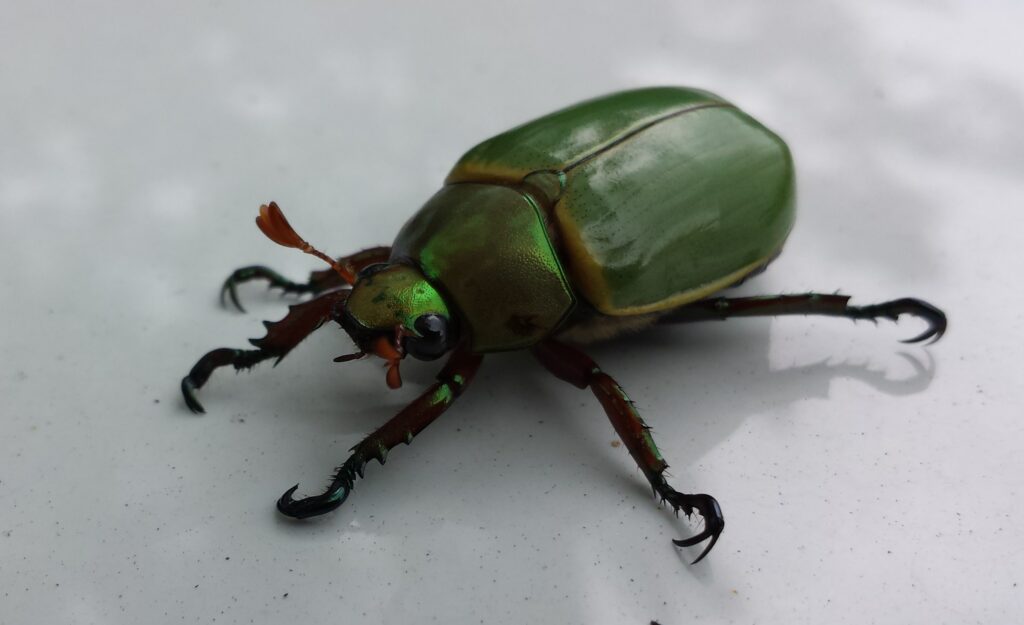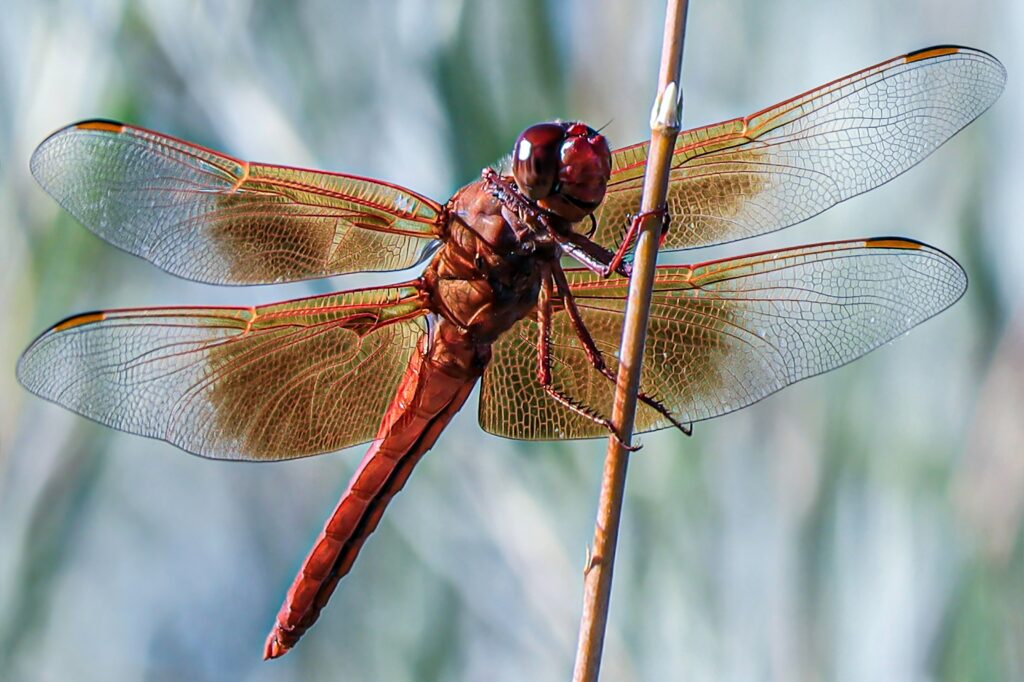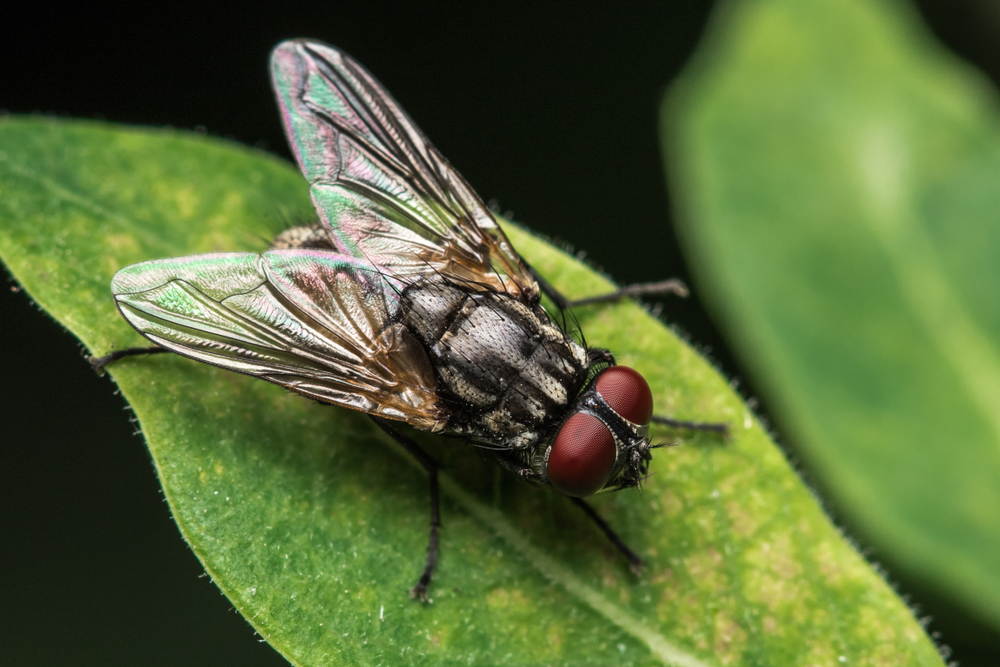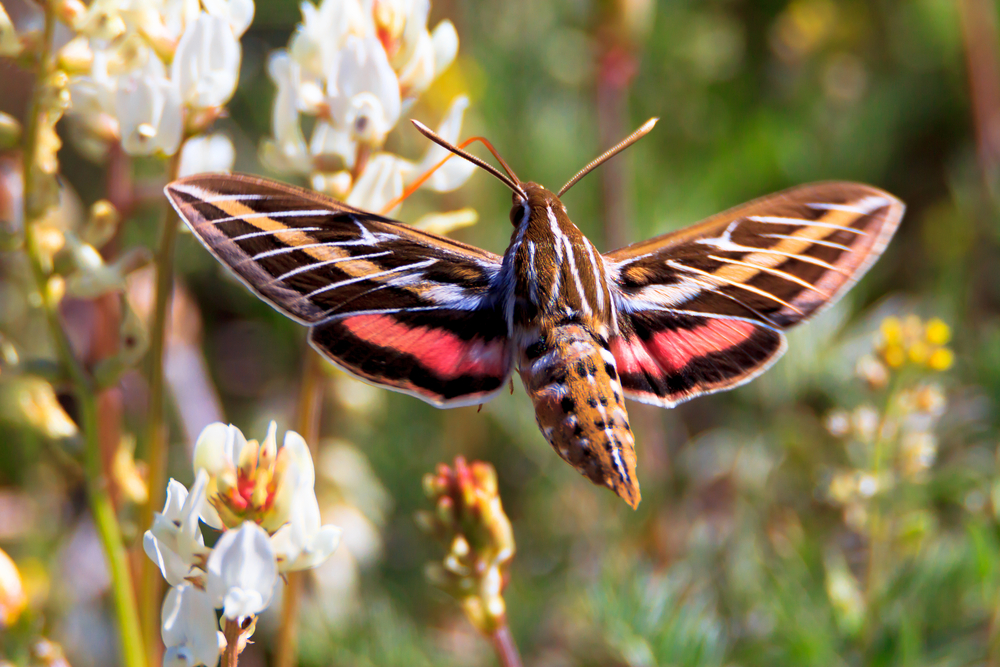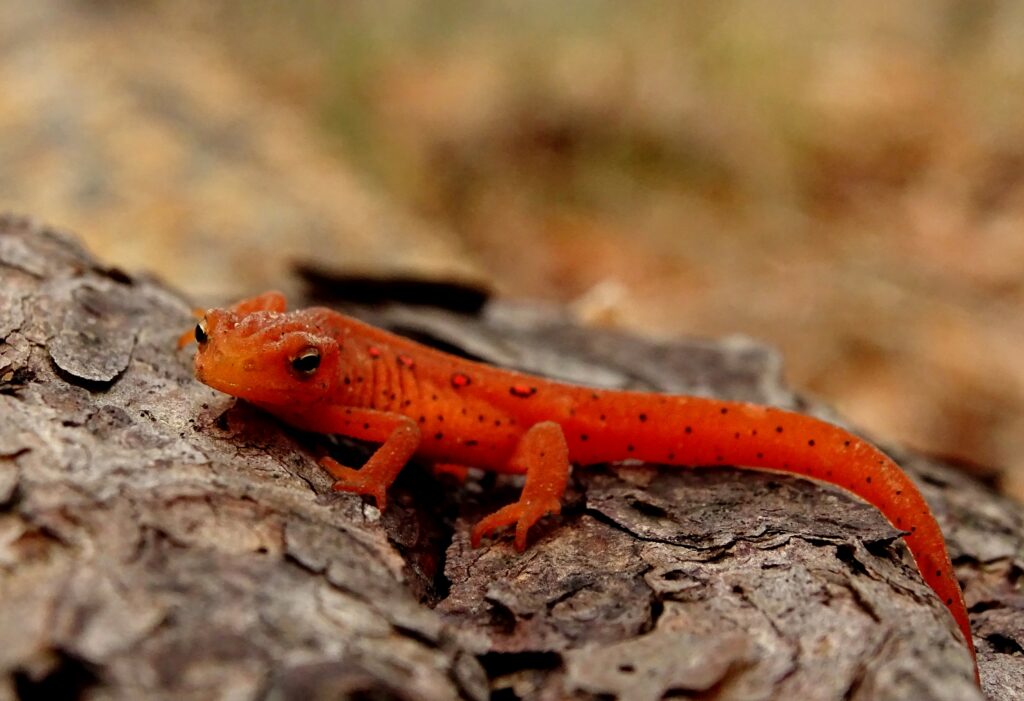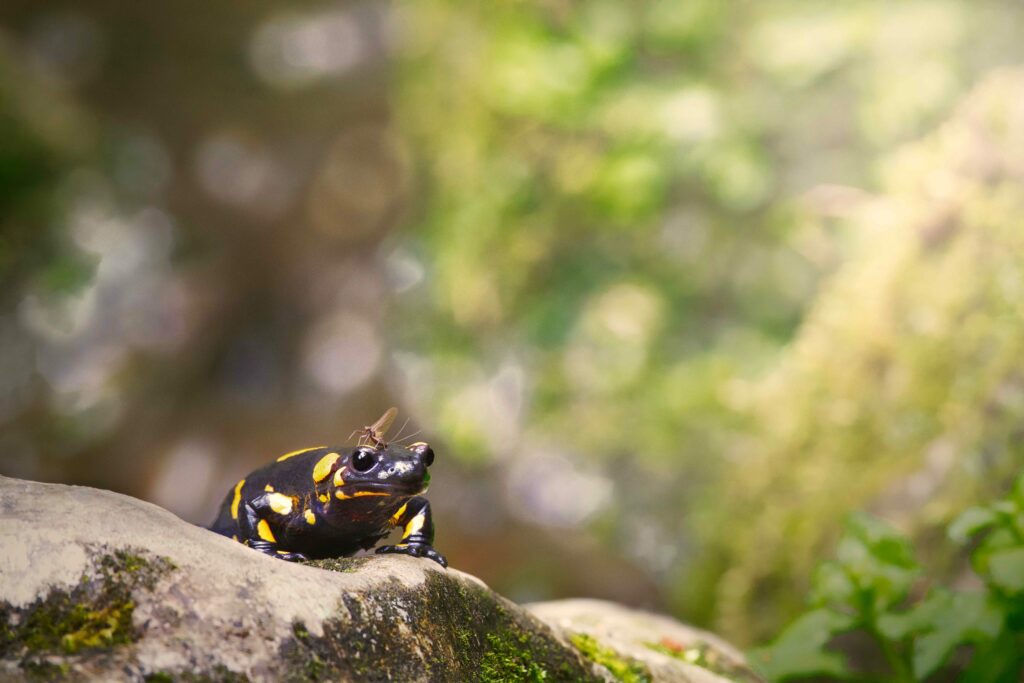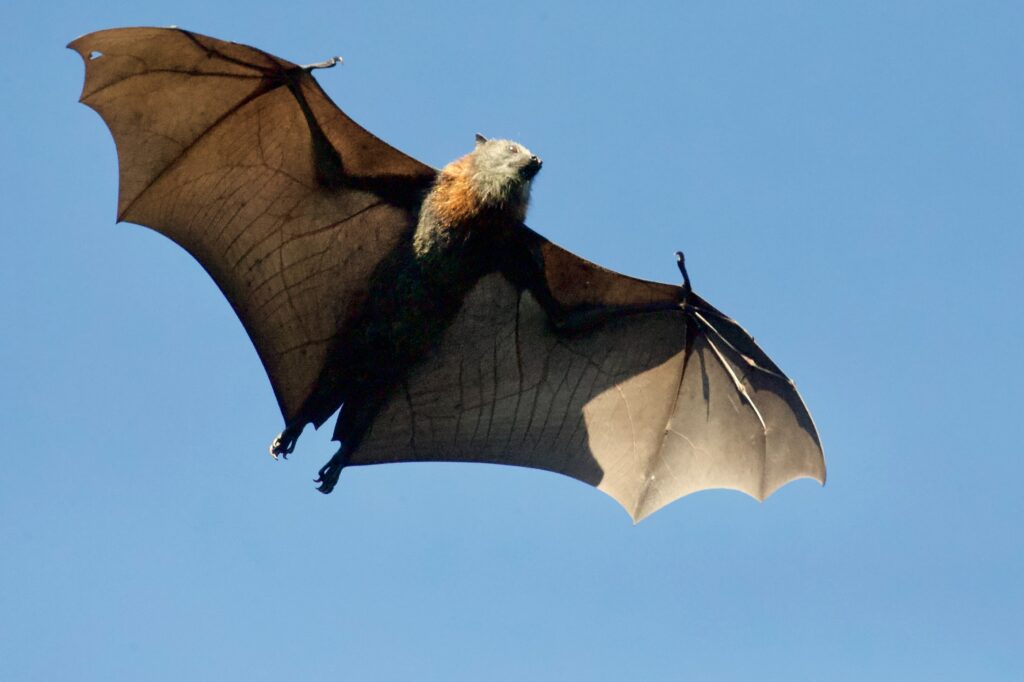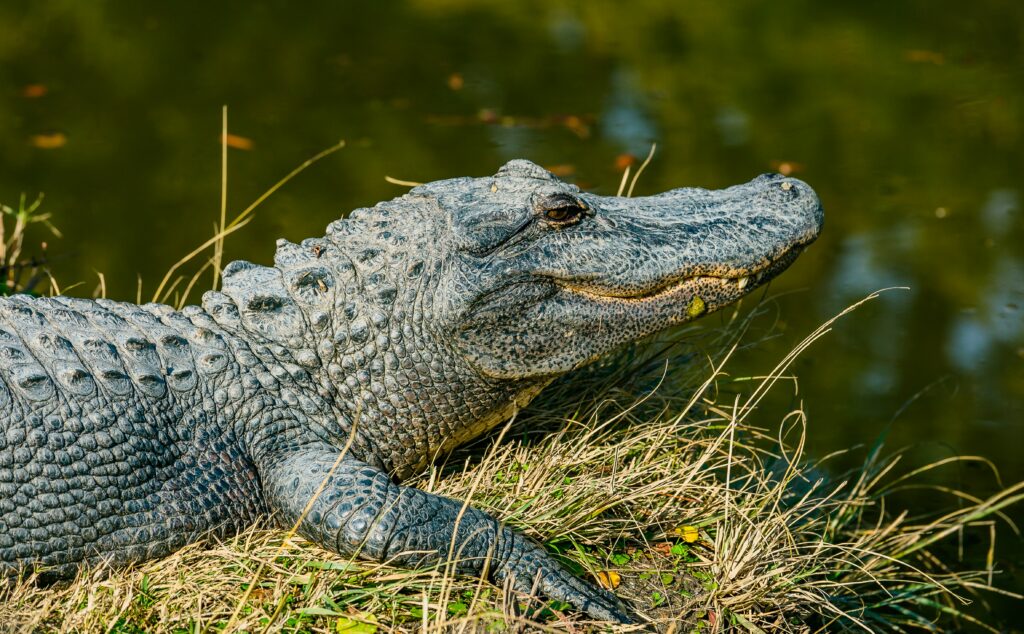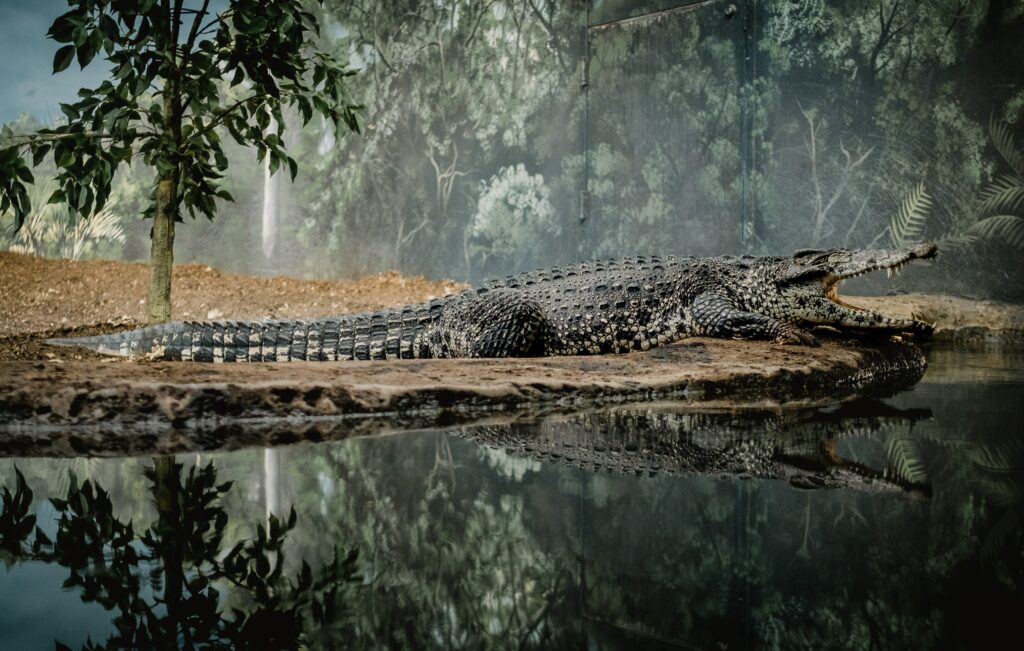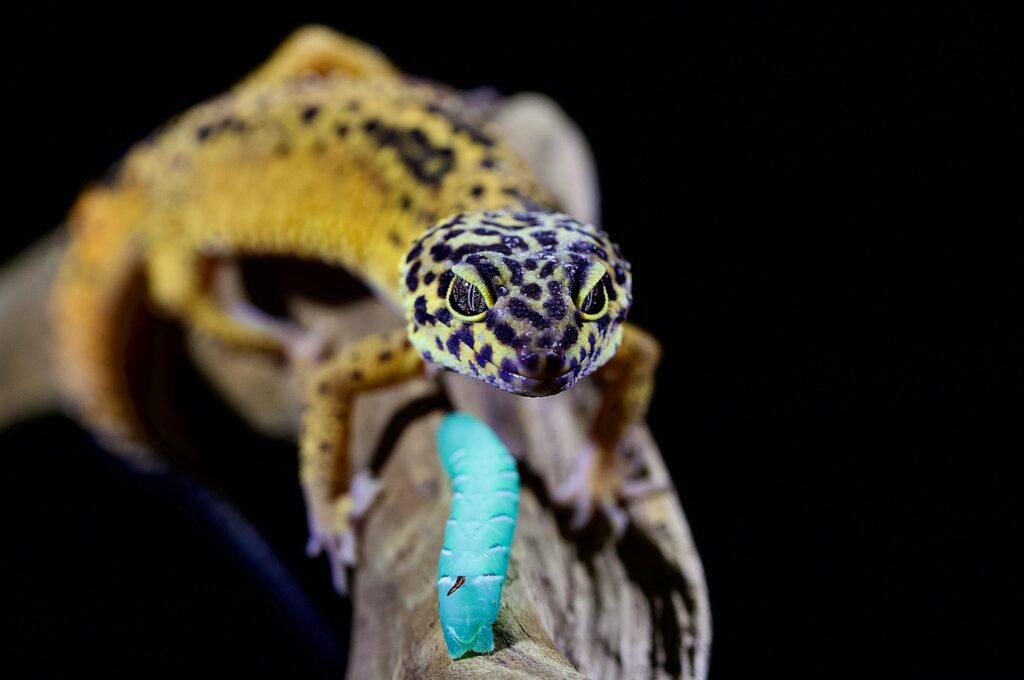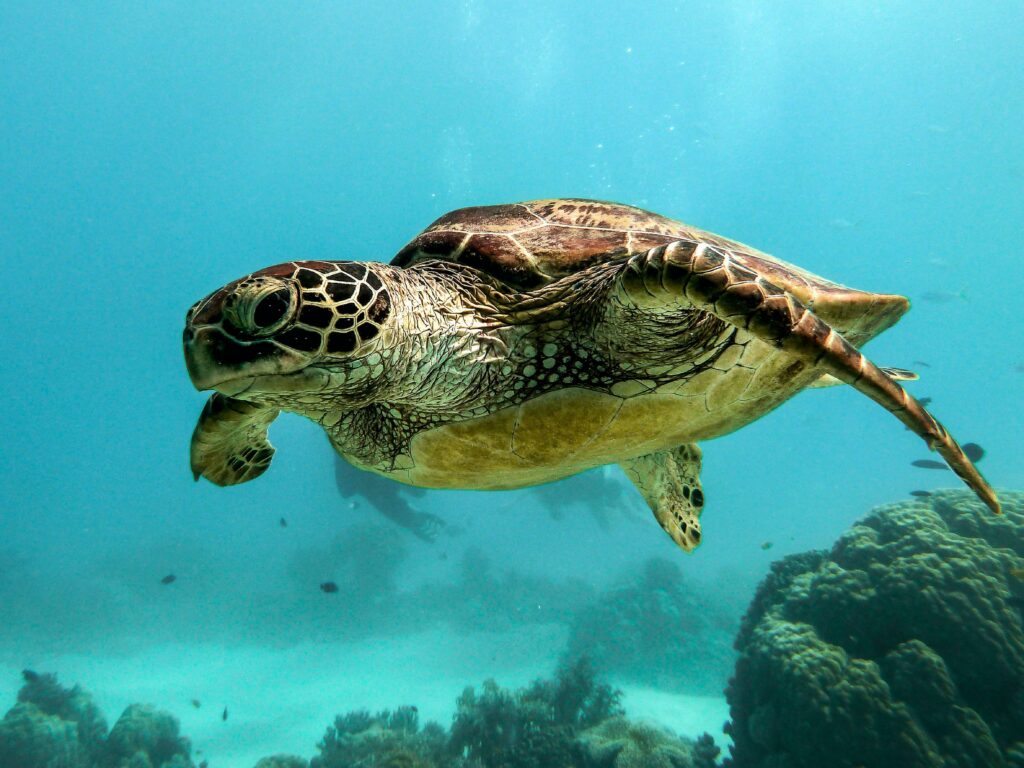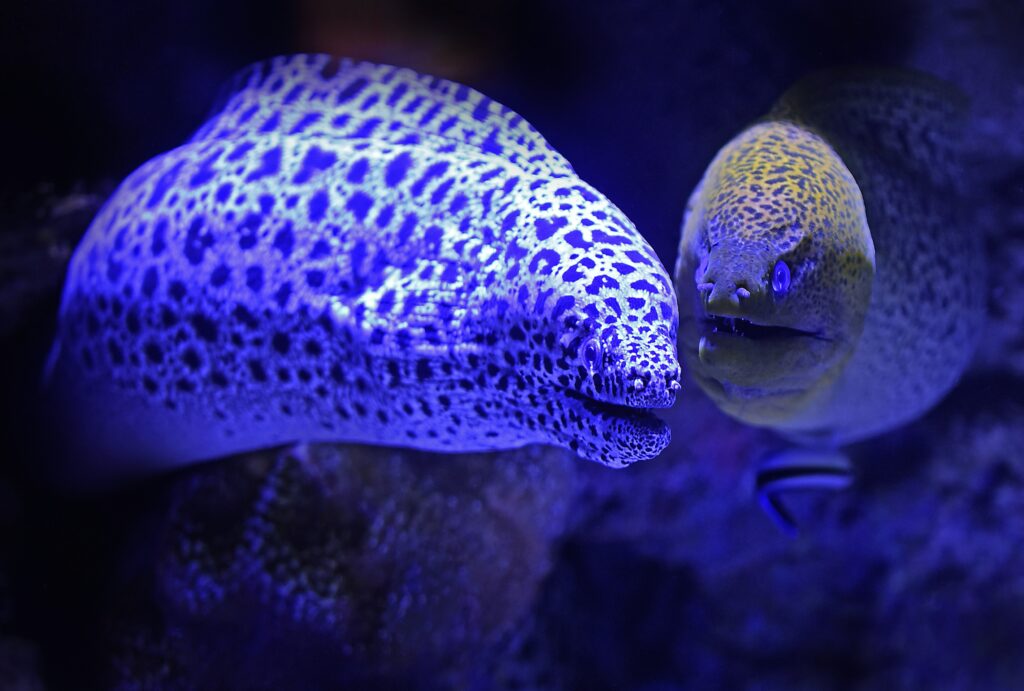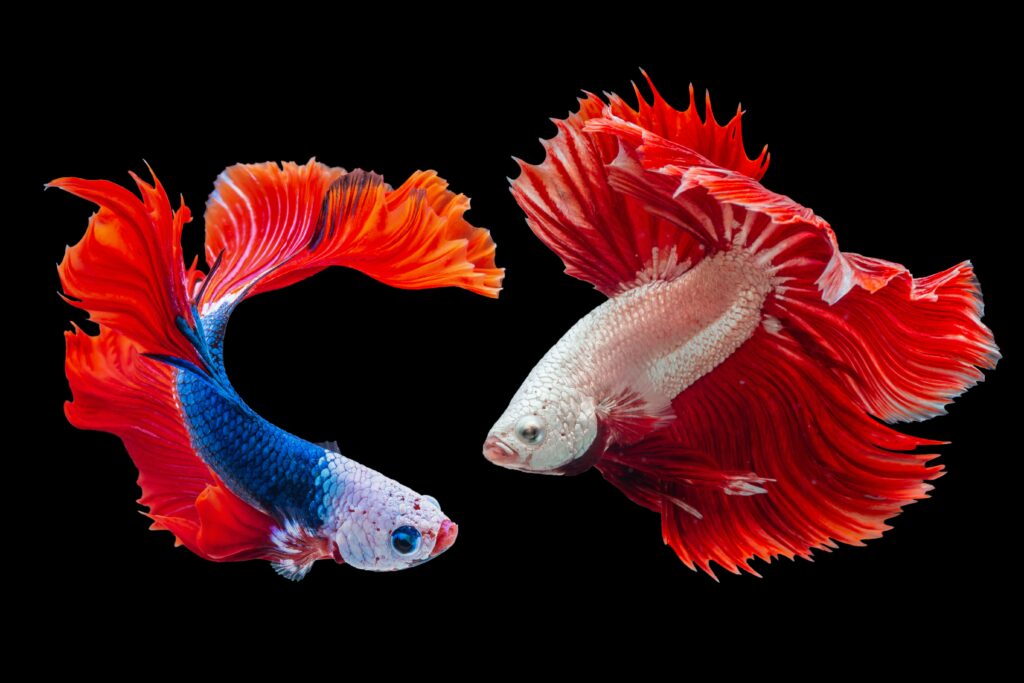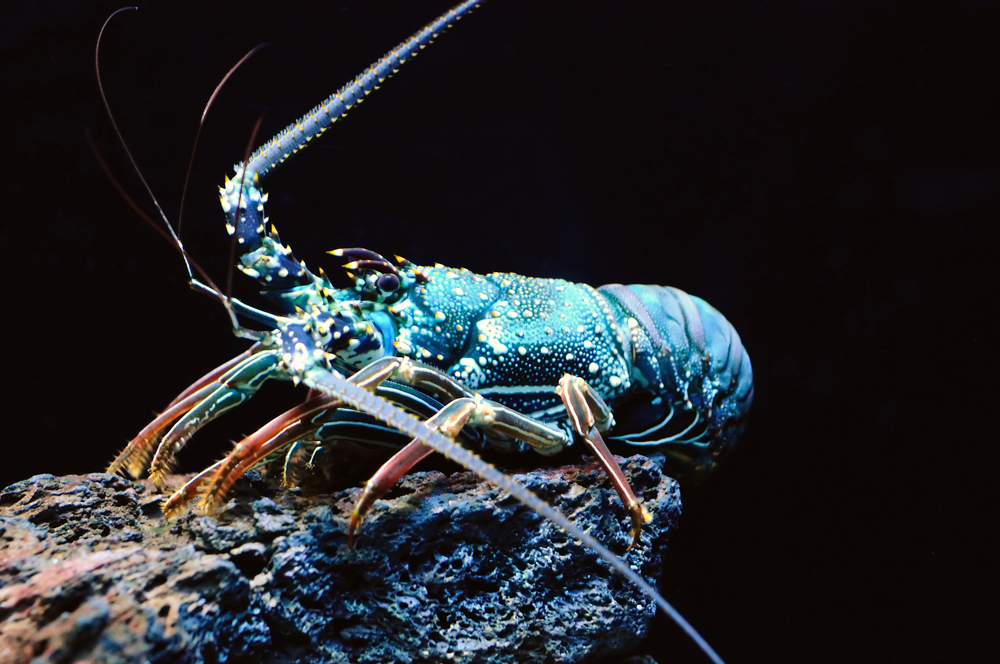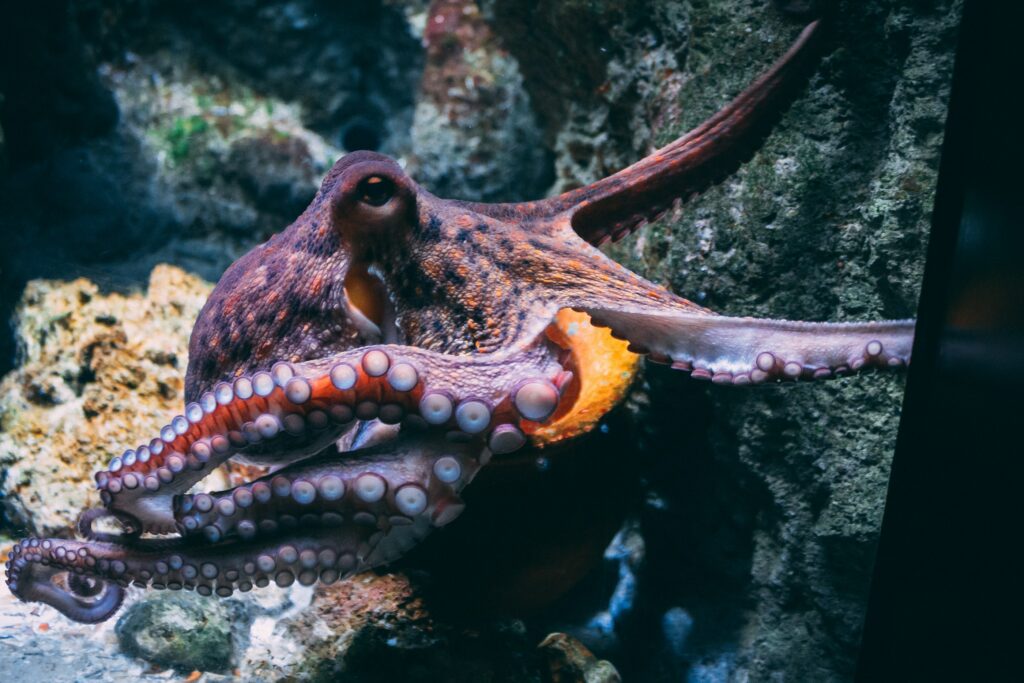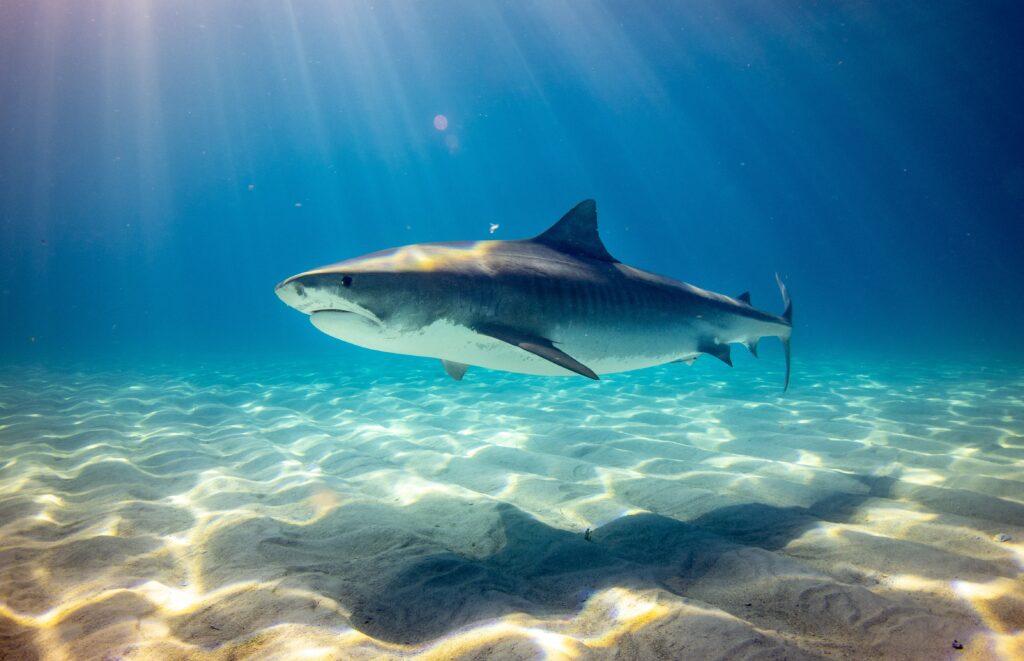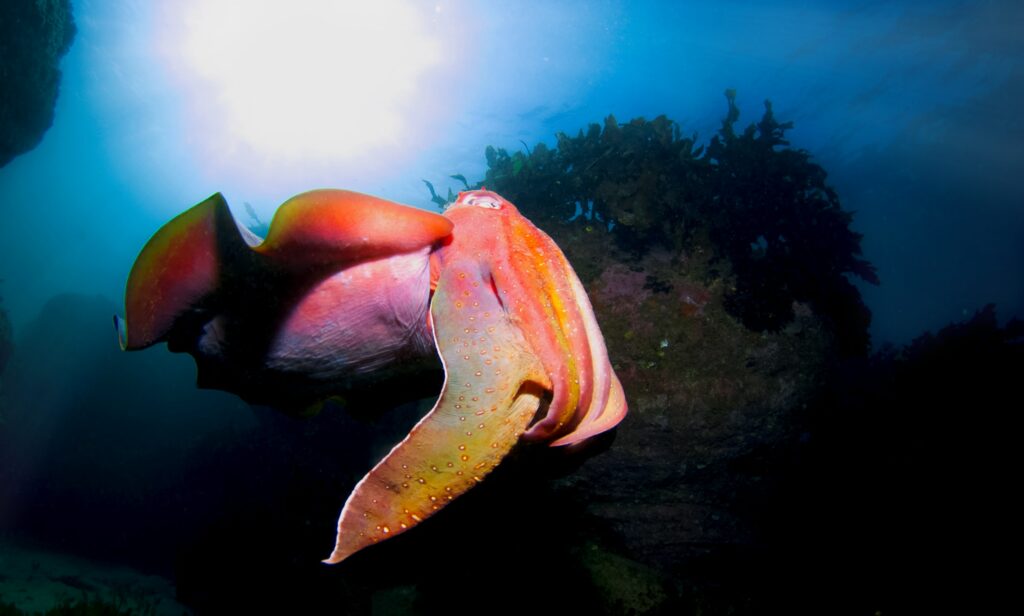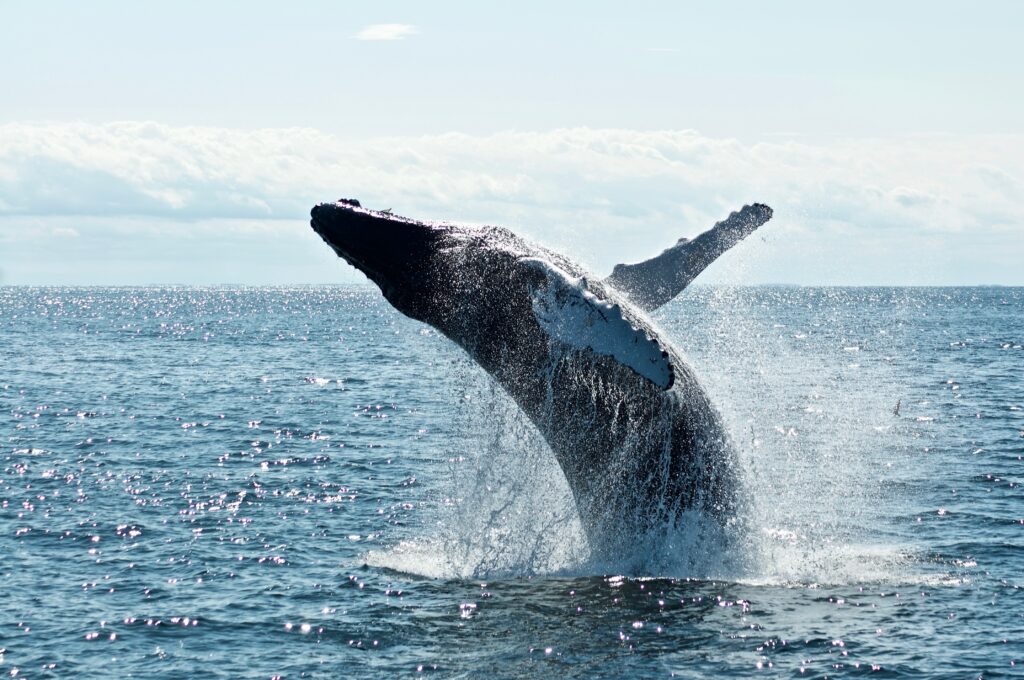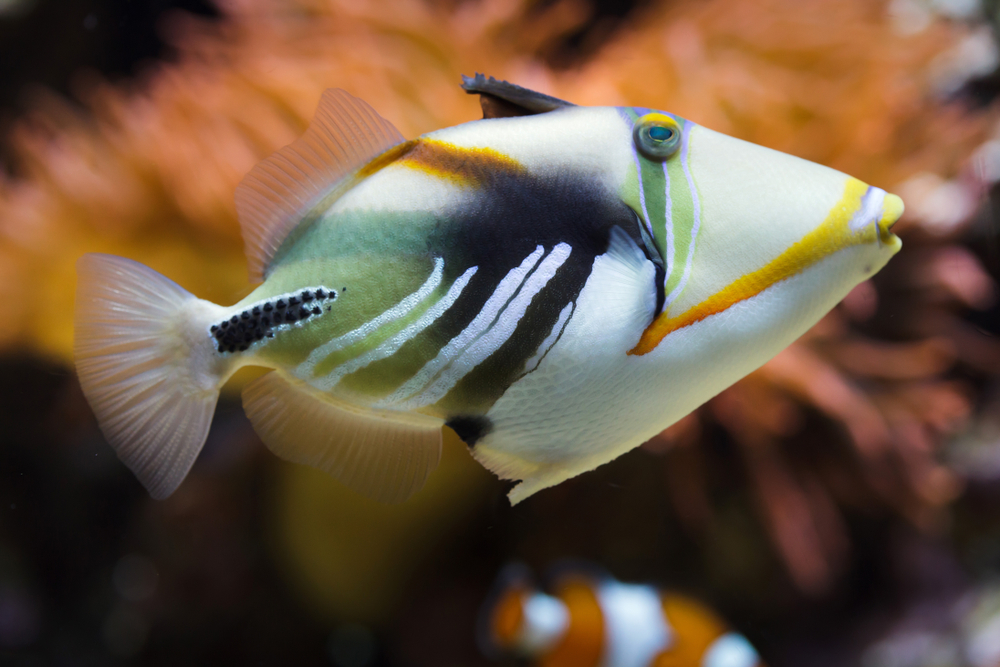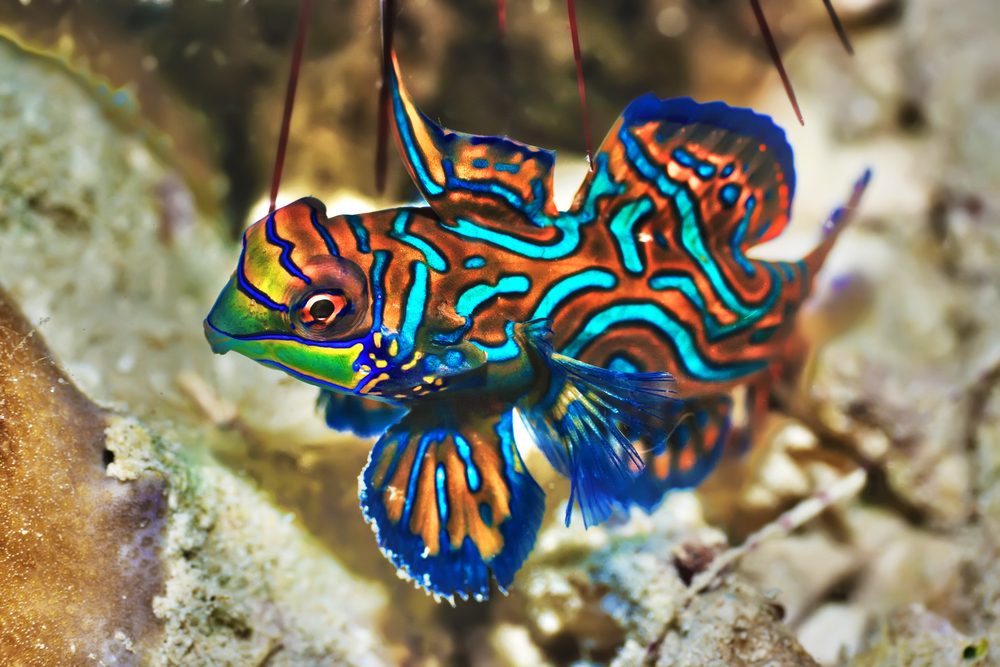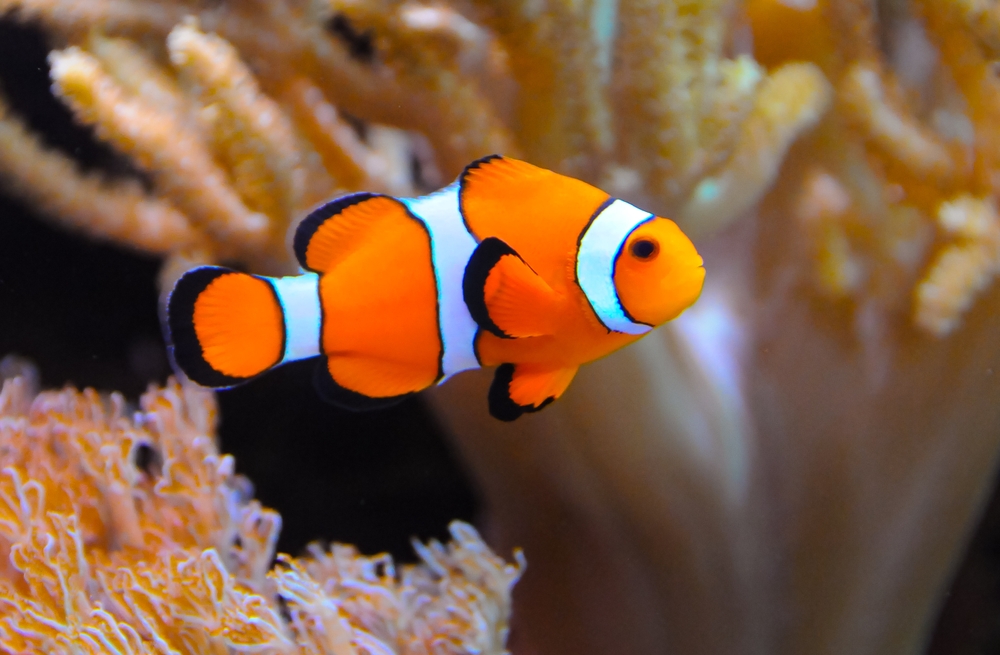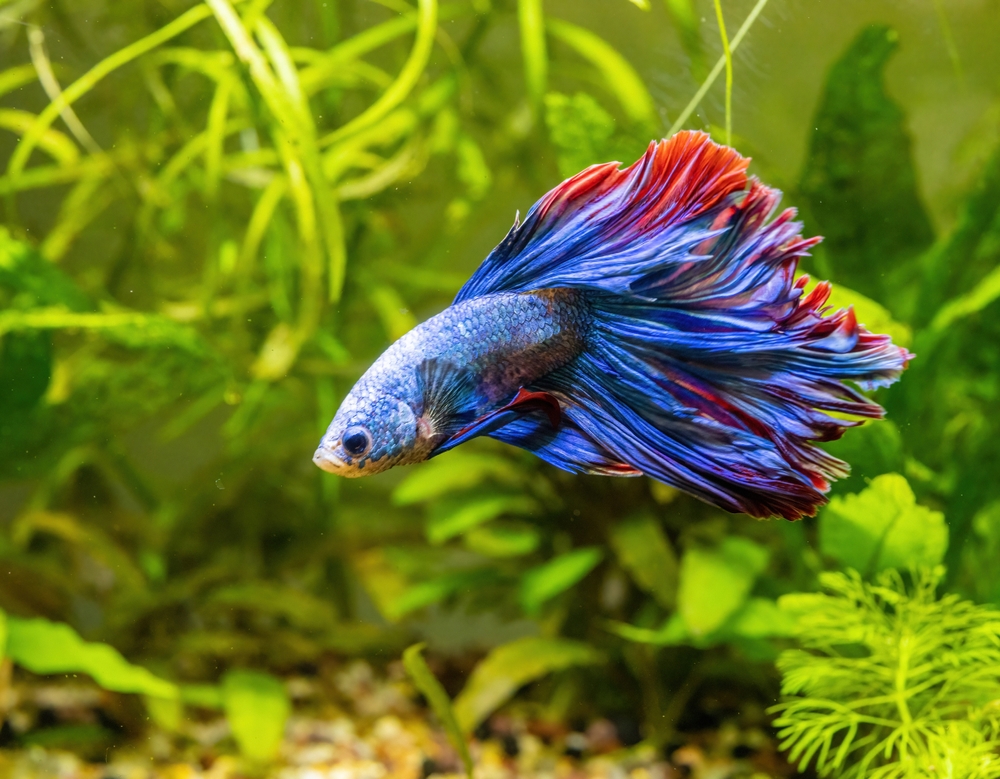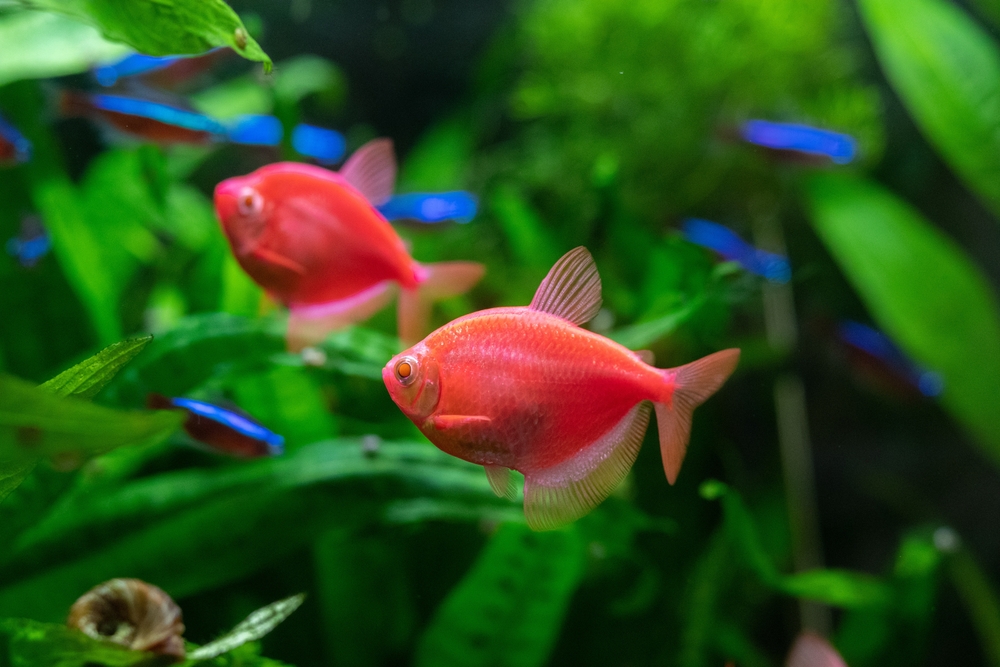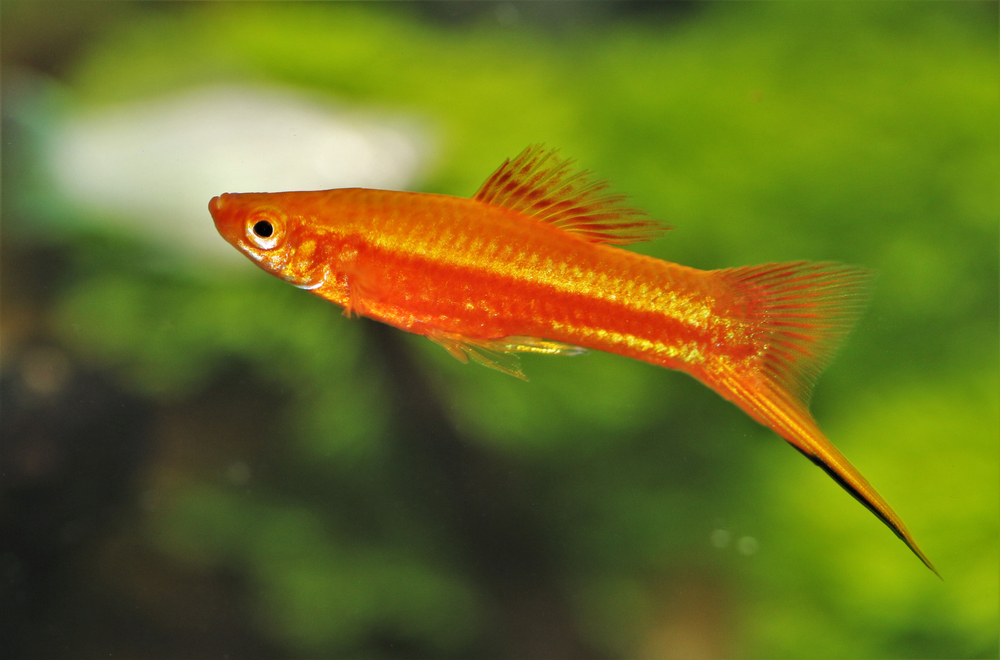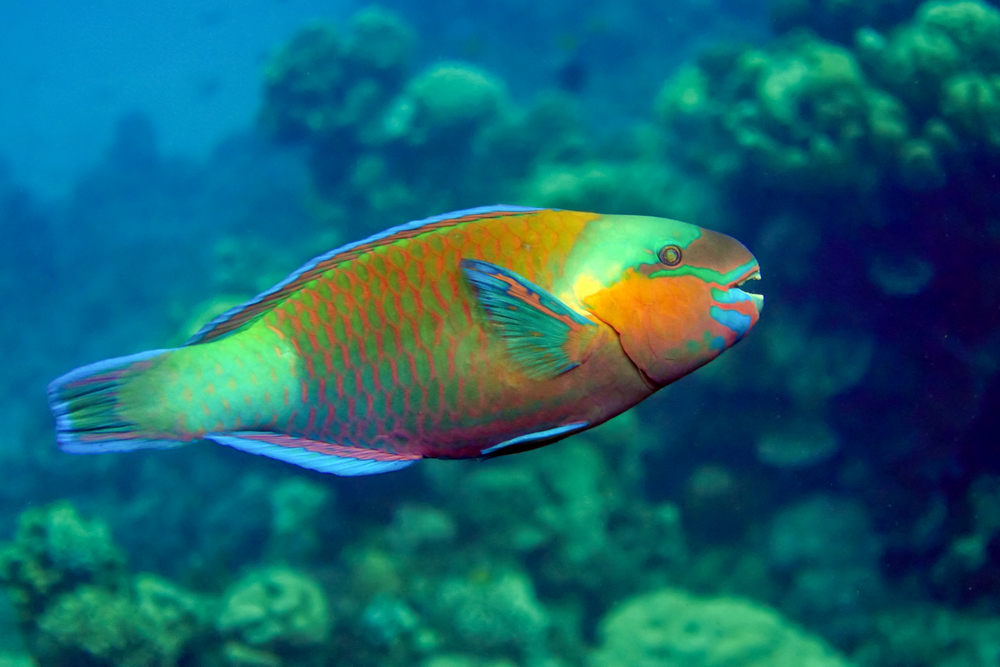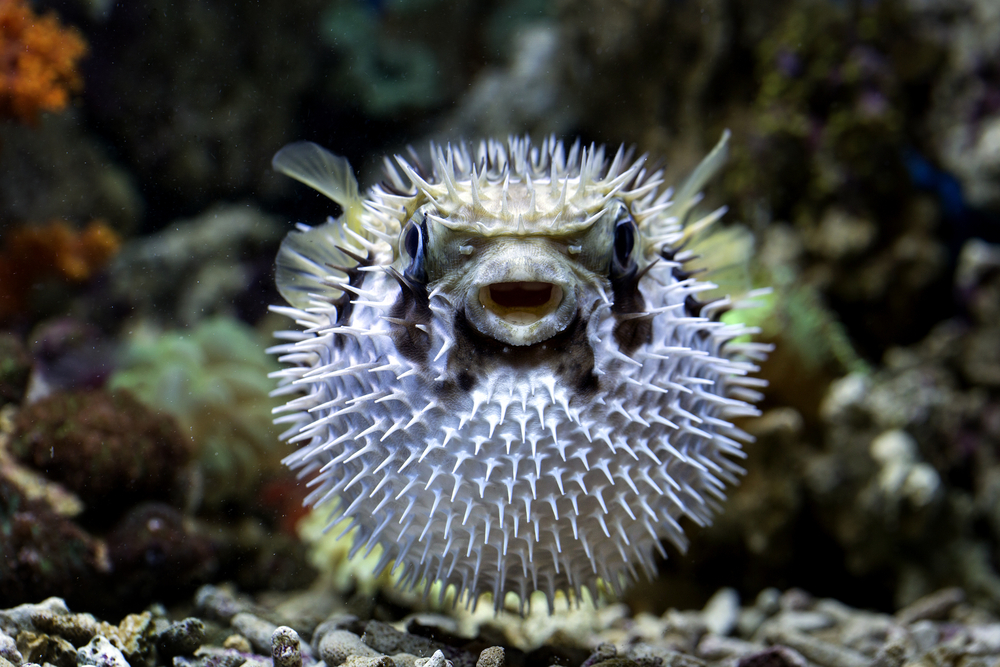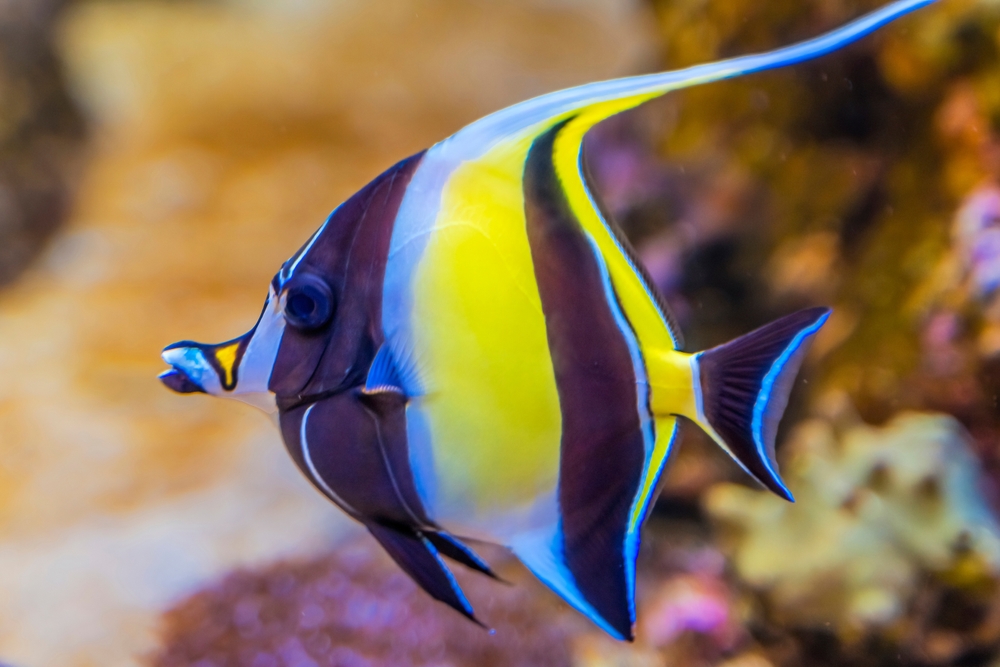Triggerfish belong to the family Balistidae, and their closest relatives are filefish (family Monacanthidae). Both share similar body shapes and fin structures, though triggerfish are more robust and aggressive.
About
The Triggerfish are striking, tough-skinned reef dwellers known for their bold patterns, strong jaws, and unique defensive behavior. They belong to the family Balistidae, which includes about 40 species found in tropical and subtropical oceans worldwide. Triggerfish are most common on coral reefs in the Indo-Pacific, Atlantic, and Caribbean, where they play an important role in reef ecosystems.
These medium-sized fish typically grow 8–20 inches (20–50 cm) long, though the largest, the titan triggerfish, can reach 30 inches (75 cm). Their bodies are deep and laterally compressed, covered with tough, sandpaper-like skin. Triggerfish are brilliantly colored, often sporting vivid blues, yellows, and patterns that help them blend into coral surroundings or intimidate rivals.
Their name comes from a special locking mechanism in their dorsal fins. When threatened, they can erect their first spine and “lock” it in place with a second spine, making them difficult to dislodge from crevices—a highly effective defense against predators.
Triggerfish are also formidable feeders. Equipped with strong, beak-like teeth, they crush hard-shelled prey such as sea urchins, crabs, and mollusks, though many species also eat algae and sponges. Their feeding habits contribute to reef balance by controlling invertebrate populations.
Behaviorally, they are known for their intelligence, curiosity, and sometimes aggressive nature, especially when guarding nests. Females often build and fiercely protect circular nests in sandy areas, chasing away intruders—including divers—during breeding season.
Prized by divers for their beauty but respected for their territorial behavior, triggerfish symbolize both the allure and the raw power of reef life. They are also significant in local fisheries and, in some cultures, considered a delicacy.
Physical Characteristics
Triggerfish are bold, brightly colored reef fish known for their distinctive body shape and unique defensive adaptations.
Body:
They have a deep, laterally compressed, oval-shaped body with tough, leathery skin covered in small scales. Their stout form gives them strength and maneuverability around coral reefs.
Coloration:
Triggerfish display striking colors and patterns, ranging from yellows, blues, and greens to bold stripes, spots, or geometric markings. Coloration often varies between species and can intensify during breeding or displays of aggression.
Head and Mouth:
They have a steep, sloping forehead and a small but powerful mouth with strong jaws. Their sharp, chisel-like teeth are adapted for crushing hard-shelled prey like sea urchins, crabs, and mollusks.
Fins:
A hallmark feature is their unique dorsal fin system. The first dorsal spine can be “locked” upright, and only the second spine (the “trigger”) can release it—hence their name. Their tail is strong and fan-shaped, providing bursts of speed.
Size:
Depending on the species, triggerfish range from 8–20 in (20–50 cm), though the largest species, the titan triggerfish, can grow up to 30 in (75 cm).
Weight:
Most weigh between 2–10 lbs (0.9–4.5 kg), with large individuals exceeding this in the wild.
The triggerfish’s bold colors, powerful jaws, and unique locking dorsal fin make it one of the most distinctive and easily recognized reef fish.
Reproduction
Triggerfish exhibit strong parental care and aggressive nest defense, setting them apart from many other reef fish.
Mating and Courtship:
During breeding season, males establish and defend territories on sandy or rubble bottoms near reefs. They court females through displays of color, fin spreading, and circling behaviors.
Spawning:
Females lay adhesive eggs in shallow depressions dug by the male. The male fertilizes them externally, and both parents—especially the female—guard the nest.
Eggs and Development:
Eggs are small and numerous, often numbering in the thousands. They are aerated and guarded until hatching, which occurs within 24–48 hours depending on water temperature.
Larval Stage:
Once hatched, larvae drift with plankton in the open ocean, feeding on microscopic organisms. They remain pelagic for several weeks before settling back onto reefs.
Parental Care:
Triggerfish are famous for their fierce nest defense. Parents aggressively chase away intruders, including much larger fish, and even divers that come too close.
The triggerfish’s strong territoriality, parental care, and aggressive nest defense make its reproductive behavior unique among reef fishes.
Lifespan
Triggerfish are moderately long-lived reef dwellers, with lifespans shaped by their species, size, and environment.
Lifespan in the Wild:
Most triggerfish species live 8–12 years in coral reef ecosystems, though larger species like the titan triggerfish may survive up to 15 years.
Lifespan in Captivity:
In well-maintained aquariums, triggerfish often live 8–10 years, provided they receive proper diet, space, and water conditions. However, stress or poor care can shorten their lifespan.
Threats to Longevity:
In the wild, their survival is challenged by predation on juveniles, habitat degradation, and fishing pressures. Adults face fewer predators thanks to their tough skin, strong jaws, and aggressive defense behaviors.
The triggerfish’s ability to live a decade or more, combined with its resilience and territorial behavior, makes it one of the more enduring reef fish species.
Eating Habits
Triggerfish are opportunistic carnivores with powerful jaws adapted to crush hard-shelled prey on coral reefs.
Diet:
They feed primarily on sea urchins, crabs, mollusks, shrimp, and other crustaceans. Some species also consume algae, coral, and small fish when available.
Feeding Behavior:
Triggerfish use their sharp, chisel-like teeth to break apart shells and spines. They are one of the few reef fish capable of flipping sea urchins over to access the softer underside.
Foraging Strategy:
They forage actively during the day, searching sandy bottoms, reef crevices, and coral rubble. Their strong jaws and precision allow them to tackle prey that many other reef fish cannot.
Role in the Ecosystem:
By preying on sea urchins and other invertebrates, triggerfish help regulate populations that could otherwise damage reef structures.
The triggerfish’s specialized feeding skills, especially its ability to crush tough prey, highlight its role as a key predator in reef ecosystems.
Uniqueness
Triggerfish are striking reef fish, remarkable for their bold behavior, specialized anatomy, and ecological role.
Locking Spine Mechanism:
Their first dorsal spine can be locked upright, with a second spine acting as a “trigger” to release it. This adaptation helps them wedge into crevices for protection.
Aggressive Defenders:
Triggerfish are notoriously territorial, especially when guarding nests. They will chase away larger fish and even confront divers that enter their nesting zones.
Colorful Patterns:
Many species display vivid geometric markings, spots, and stripes, making them some of the most eye-catching reef inhabitants.
Unique Feeding Skills:
With strong jaws and chisel-like teeth, they can crush sea urchins, crabs, and mollusks that few other reef fish can handle.
Ecological Impact:
By controlling sea urchin populations, they protect reefs from overgrazing, playing a critical role in reef health.
The triggerfish’s locking spine, fearless nature, and specialized feeding make it one of the most unique and fascinating fish of coral reef ecosystems.
Be the First to Share Photos of This Species.
FAQ’s
1. What species is closest to the triggerfish?
2. How does the triggerfish compare to other species in the same family?
Triggerfish are generally larger, more colorful, and more aggressive than filefish. Unlike the often shy filefish, triggerfish are bold predators and fierce defenders of nests.
3. What national parks provide the best opportunities to see a triggerfish?
Triggerfish can be observed in coral reef parks such as Great Barrier Reef Marine Park (Australia), Komodo National Park (Indonesia), and Papahānaumokuākea Marine National Monument (Hawaii).
4. In what parts of the world can you find triggerfish?
They are widely distributed across tropical and subtropical oceans, especially in the Indo-Pacific, Atlantic, and Red Sea, inhabiting coral reefs, lagoons, and rocky coasts.
5. How many types of triggerfish are there?
There are about 40 recognized species of triggerfish, including the titan triggerfish, clown triggerfish, and Picasso triggerfish, each with distinctive colors and patterns.


